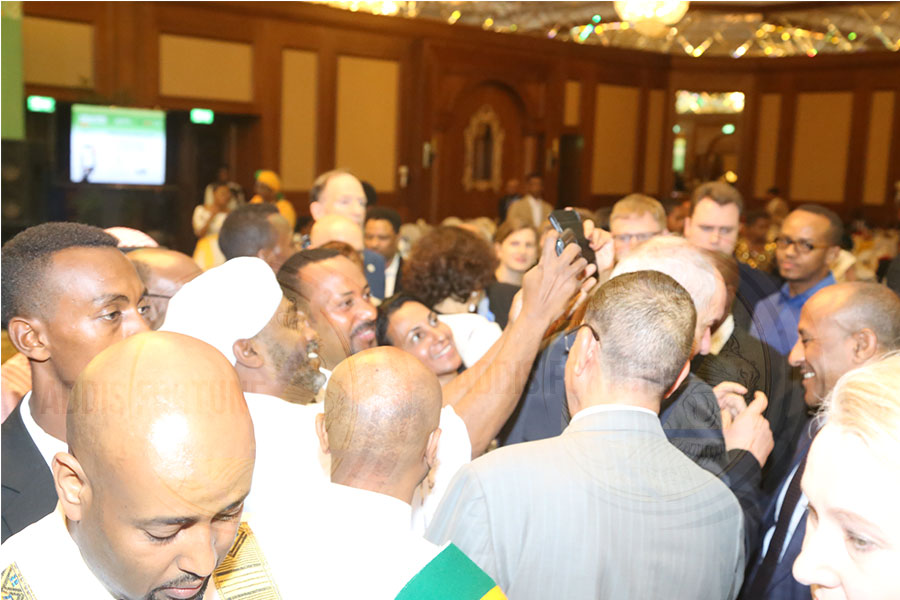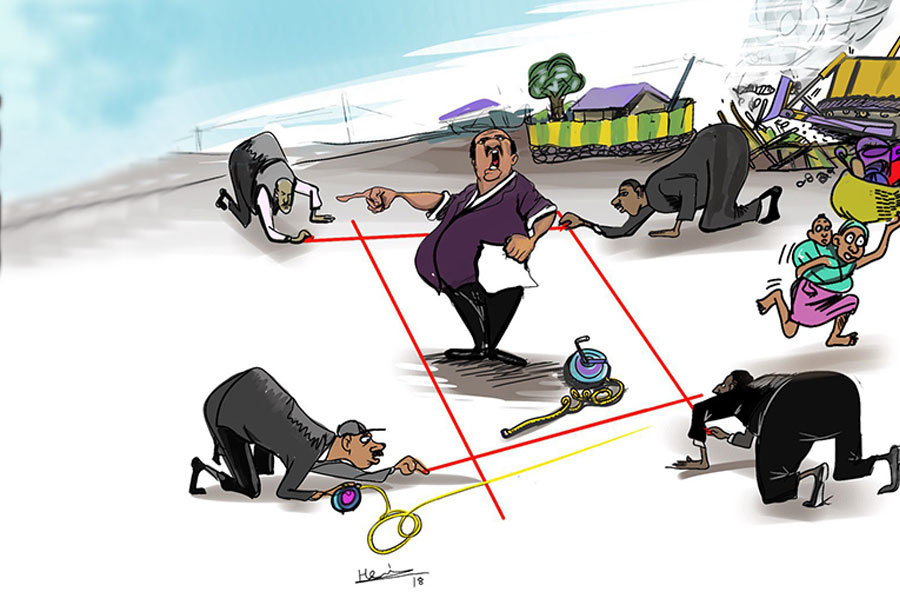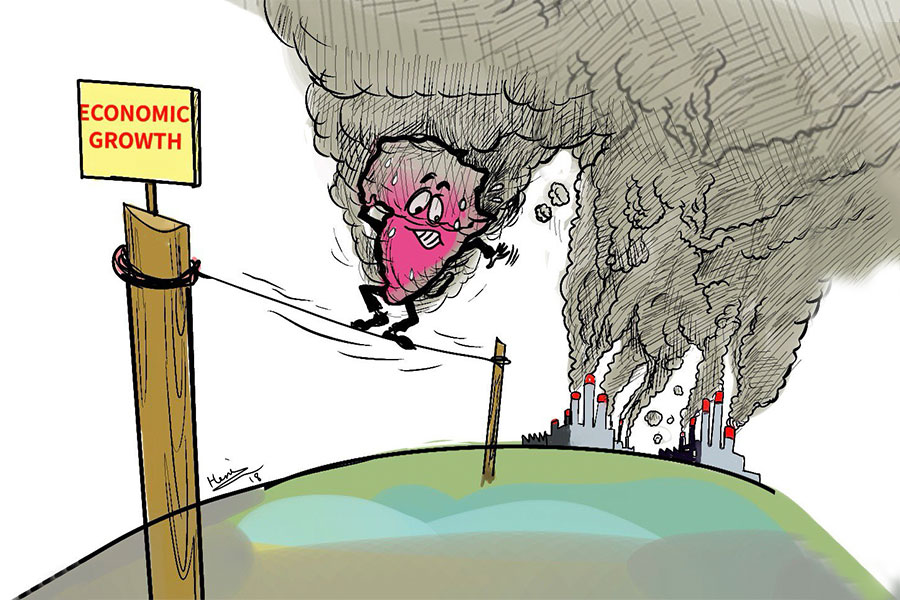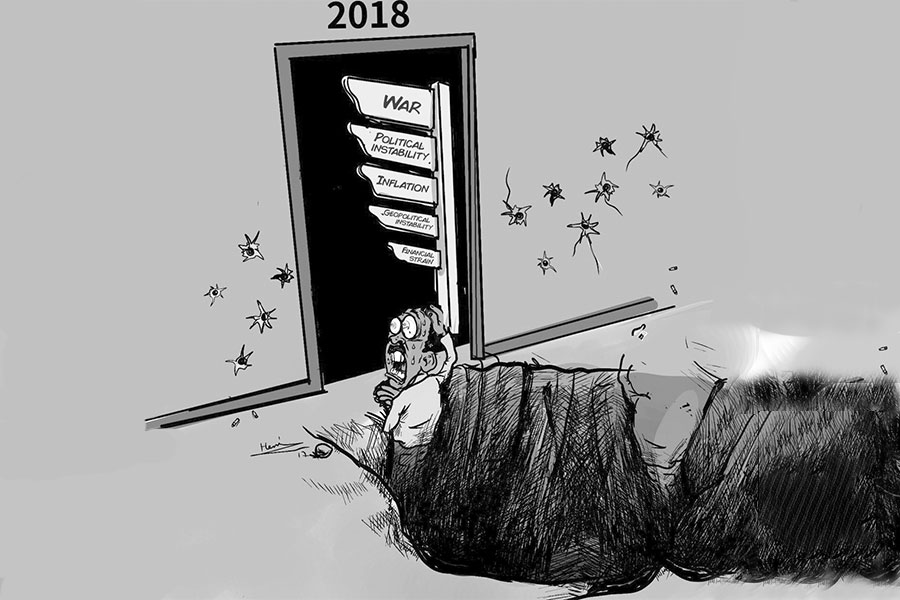
Photo Gallery | 169237 Views | May 06,2019
May 24 , 2025.
The first move in nearly half a year by the Commercial Bank of Ethiopia (CBE) to lift its foreign exchange offerings has injected fresh energy into a market that had been drifting in a narrow channel since December last year.
The state-owned bank nudged its buying rate to 128 Br for a Dollar from 126 Br and set a selling rate of 130.56 Br. And it offered a 10 Br bonus for every dollar it bought. Though modest, the adjustment ends a long spell of static pricing at the country’s largest bank and signals that monetary authorities are willing to let rates inch higher after months of gentle depreciation managed from the sidelines.
Other banks had already pushed into a different bracket. Several private banks, including the big five – Awash, Dashen, Abyssinia, Zemen and Wegagen - clustered their buying rates between 131 Br and 132 Br, revealing higher funding costs and pent-up customer demand.
However, Oromia Bank has gone further, quoting 134.44 Br to buy a dollar and 137.13 Br to sell, levels that tower above the industry average and uncover its appetite for hard currency. Whether Oromia is reacting to acute customer orders or trying to capture market share, its premium pricing has set the unofficial ceiling for formal trades.
The market shaded gently toward depreciation last week, yet within a band that pointed to continued Central Bank supervision. The average buying rate for all banks moved to 131.41 Br on May 23 from 131.21 Br at the start of the week on May 19. The average selling quote edged up to 133.93 Br from 133.86 Br.
Even these slivers matter in a system where policy often clips day-to-day swings. The spread between the lowest and highest posted rates remained yawning: before its adjustment, CBE’s 124 Br buying rate and 126.48 Br selling rate set the floor, while Oromia’s numbers marked the roof. That 10 Br gulf revealed how segmented the market has become.
The CBE, which sits on by far the largest balance sheet in the industry, has consistently provided the cheapest foreign exchange. Its role as price anchor is unlikely to disappear, but the latest tweak unveiled room for further moves if policymakers want to narrow the distance to peers.
At the other extreme, Oromia’s position signalled either a deliberate bid to lock in dollars for corporate clients or a limited supply that forces aggressive payments to attract sellers.
In the middle lies the National Bank of Ethiopia (NBE), a monetary policy institution that trades more to set the tone than to fill retail orders. Across the six-day window last week, its spreads were as tight as 0.01pc, a mark of its non-commercial posture and offering a signal to the wider market.
By quoting paper-thin margins, the Central Bank tried to flag a reference rate without crowding out liquidity in a market it is trying to liberalise in measured steps.
The latest two-week foreign exchange auction, held last week, reinforced this message. The Central Bank put up 50 million dollars, trimming the amount by 10 million dollars earlier in May. Bids came from 14 banks, down from 16, and the weighted average clearing price landed at 133.17 Br, a rise of 0.19 Br from the prior round but still softer than the 0.26 Br gain logged two weeks before.
Central Bank officials have supplemented these price signals with a burst of regulatory changes. Importers may now prepay up to 50,000 dollars per transaction, 10 times the previous ceiling, in a bid to ease supply-chain delays for manufacturers hungry for raw materials.
Travellers, too, can access official channels more deeply. Individuals can buy as much as 10,000 for personal trips (up from 3,000), while business travellers may access up to 15,000.
Holders of foreign currency accounts may spend 20pc of their balances, double the earlier limit. The hope in policy circles is that these measures will siphon demand away from the unregulated parallel market by making it easier and less cumbersome to obtain dollars through licensed banks.
Perhaps the most far-reaching change lands on May 26, when the Central Bank capped all fees tied to foreign exchange transactions at four percent, a previously gentlemen’s agreement now stamped by the authorities.
Banks are compelled to publish detailed fee schedules starting in June, ending years in which opaque charges, sometimes tucked into correspondent-bank costs or wrapped in service labels, drove corporates and individuals to seek cheaper routes. By shining light on banks’ true margins, regulators plan to restore credibility and compress the wide gap between formal and informal markets.
Taken together, the rate tweaks, auction results, and rule changes signal that the Central Bank Governor, Mamo Mehiretu, is tiptoeing toward a looser and more transparent currency regime while trying to avoid the pitfalls of a sharp devaluation. The Brewed Buck continues its gradual slide within official bands, but the market's architecture is shifting.
Larger prepayments for importers, higher travel allowances, richer spending limits for foreign-currency account holders, and a ceiling on charges all pointed to a phased liberalisation designed to let prices adjust without undermining confidence.
Nonetheless, fragmentation persisted. The nearly 10 Br spread between CBE’s old quotes and Oromia’s top-of-the-market rates showed how unevenly foreign currency is distributed among banks. Banks with diversified deposit bases or special relationships with exporters can afford to keep their rates low; others should pay up to satisfy clients or meet regulatory open-position rules.
Until that dispersion narrows, the foreign exchange regime will look less like a single market and more like a series of semi-connected pools.
Still, the direction of travel is clear. By pairing modest rate movements with broader access channels and cost transparency, policymakers hope to coax more Green Buck into the banking system and shrink the premium commanded by underground dealers. Whether that ambition can withstand external shocks — tighter global liquidity, rising energy bills, or fresh political strains — remains an open question.
For now, Governor Mamo appears content to test the waters, moving a few paces at a time and watching how the market absorbs each signal.
The coming weeks will test the durability of this strategy. If demand for hard currency subsides as importers tap larger prepayments and travellers rely on higher allowances, the official market could see improved liquidity and a narrowing of spreads. A sustained gap, by contrast, would imply that supply remains tight or that expectations of further depreciation keep dollars out of sight.
Either outcome will feed back into the Central Bank’s calculus as it decides whether to accelerate liberalisation or tighten once more.
For businesses and households, the immediate takeaway could be subtle but important. Official channels are becoming slightly more accommodating, though not yet generous. Importers may find it easier to settle invoices, and travellers will face fewer hoops. However, the higher quotes at banks such as Oromia reveal that the Green Buck remains a prized, and scarce, commodity.
Until reserves rebuild and confidence firms, the exchange rate story will likely stay one of careful steps rather than bold leaps.
PUBLISHED ON
May 24,2025 [ VOL
26 , NO
1308]

Photo Gallery | 169237 Views | May 06,2019

Photo Gallery | 159483 Views | Apr 26,2019

Photo Gallery | 148986 Views | Oct 06,2021

My Opinion | 136168 Views | Aug 14,2021

Sep 27 , 2025
Four years into an experiment with “shock therapy” in education, the national moo...

Sep 20 , 2025
Getachew Reda's return to the national stage was always going to stir attention. Once...

Sep 13 , 2025
At its launch in Nairobi two years ago, the Africa Climate Summit was billed as the f...

Sep 6 , 2025
The dawn of a new year is more than a simple turning of the calendar. It is a moment...